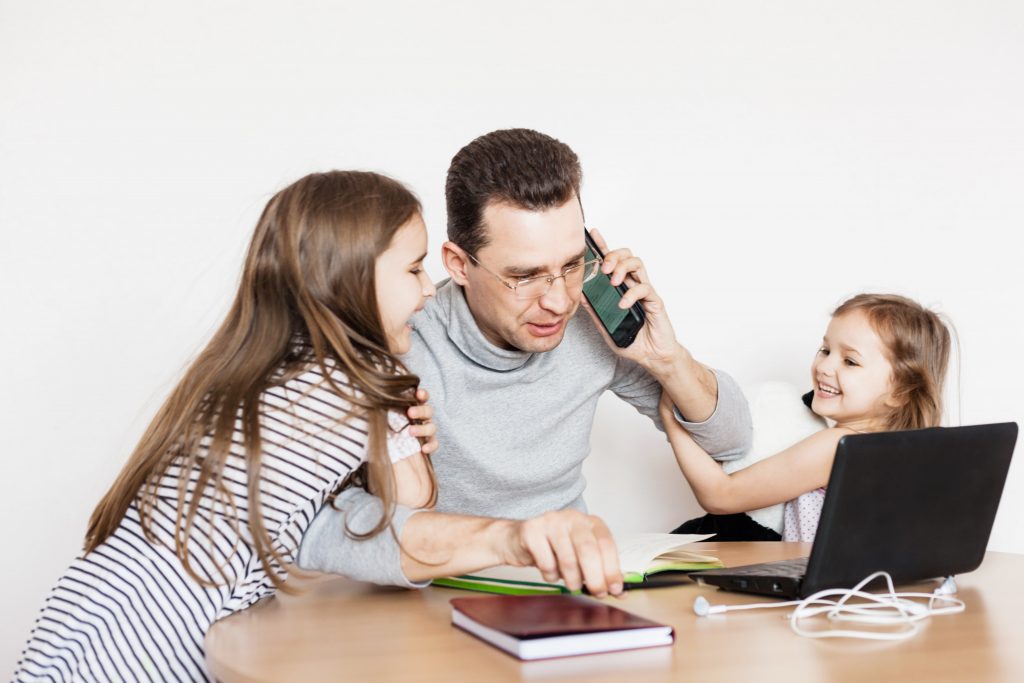Working from home: how to separate your personal and professional life
Working from home comes with a series of challenges. If you find separating your professional and personal life difficult, read coach Stela Toderascu’s insights on adaptation and developing new habits.
What is adaptation? The process or the state of adjusting or changing to become more suited to an environment.
When we used to travel to other countries we had to adapt to a lot of things: driving on the left side of the road, socket adaptor for chargers, the time difference, the cuisine, the culture, etc.
In the case of the pandemic, we had to adapt to a new context, new rules, new ways of doing things.
There is a more and more stringent need for a behavioural adaptation.
Humankind is capable of adapting to new circumstances since forever. It seems that after a period of struggling with acceptance of the news, the changes, the new normal, we finally start to adapt to the new context.
Often, two or more species co-adapt and co-evolve as they develop adaptations that interlock with those of the other species, such as with flowering plants and pollinating insects. Is it the same situation with working from home? Can we blend the two types of activities, job and personal life, in the same environment?
Lately, the objectives of my clients have been related to the clear separation of personal and professional time spent at home.

With the majority of children studying online and parents working from home, finding a quiet working space for everyone is difficult. The tendency is to answer an e-mail or check if there is something new on a communication group from work even after working hours, as there is a feeling of guilt that we didn’t do as much as we would have done working from the office.
During this period, although you spend time with your family, you are not really present as your mind still thinks about work, while some me-time is out of the question.
What is the solution in such a case?
Each of us has his/her own plan and routine. It is important to make the separation from work very sudden at a set hour. If you planned to close the laptop at 6 p.m., do it, no matter if in the last three seconds a new e-mail came into your inbox and the subject line appeared to be intriguing.
It will be hard at the beginning. It’s like turning off the TV with cartoons for a toddler, even if the agreement was to watch only for ten minutes.
Habits are where our lives and careers and bodies are made.
Seth Godin
World Famous Marketing Expert
It is a routine that will soon become a habit and then a rule.
You just need to exercise the same routine of “turning off” the working time at 6 p.m. every day, for one month. The first three days are the hardest. You feel guilty that your team is still working, or that you could really finish something earlier if you stayed longer.
Other times you have a strong fear of missing out.
You think there is something really important being discussed in your communication group from work and if you don’t look now, you will miss an opportunity, or a chance to show off. It is true. It is hard to change behaviour. When you have these feelings, just look at your family, find an interesting activity that will captivate you and you’ll forget faster about work. If you have a hobby or something that you really love to do and if you could immediately switch to doing that thing, it would be really helpful.
After the first week, some people start losing the feeling of guilt and in two weeks or so the fear of missing out. At the same time, you feel a tremendous change for the better in the relationship with your family, and more importantly, you start finding time for yourself. Soon you adapt to the new routine as if it was always like this.
The first step for adaptation is to accept something has changed.

Before starting the routine change exercise, answer the following questions:
- What has changed?
- How is this change affecting my routine or my life?
- What should my new routine look like, so I can be happy about my life?
- What are the actions that would help me get to the desired routine, having in mind the new circumstances?
- Which of the actions could be the most impactful, having immediate visible result?
- When can I start doing it?
- What is the expected outcome?
Then follow the same process with the rest of the actions, until you draw an action plan to achieve the required routine in the new context that would make you happy.
Good luck with the adaptation!
Join the Conversation
We’d love to hear what you have to say.
Get in touch with us on our LinkedIn Page, Facebook Page, Twitter or TikTok.

